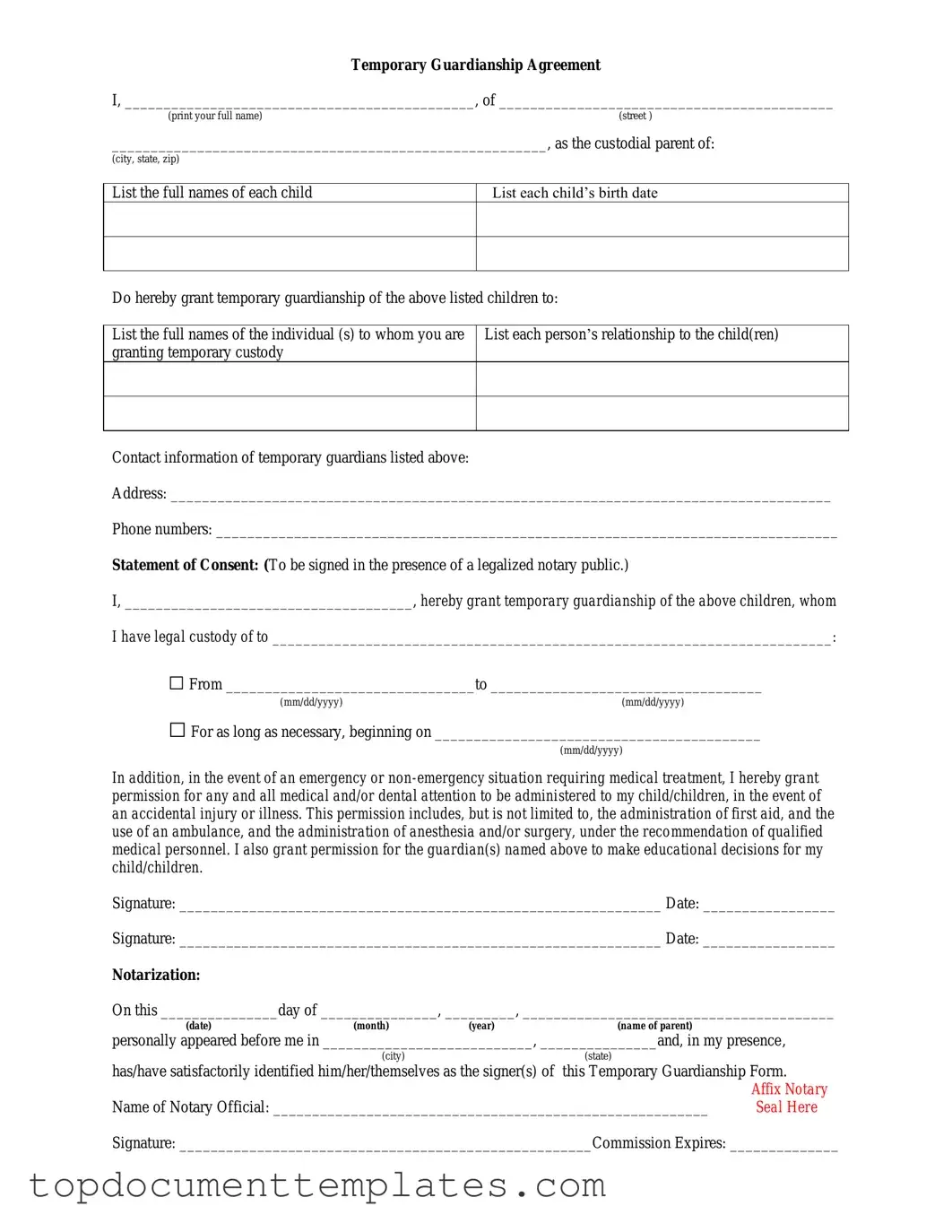The Temporary Custody form plays a crucial role in family law, particularly when immediate care and decision-making authority for a child is required. This form is often used in situations where a parent or guardian is unable to provide adequate care due to various circumstances, such as illness, incarceration, or other emergencies. It allows a designated individual, often a relative or close family friend, to assume temporary guardianship responsibilities. The form typically requires detailed information about the child, the parties involved, and the specific reasons for seeking temporary custody. Additionally, it outlines the duration of custody and any limitations on the guardian's authority. By providing a clear framework for temporary arrangements, this form helps ensure that the child's best interests are prioritized while maintaining a connection with their biological family. Understanding the requirements and implications of the Temporary Custody form is essential for anyone navigating this sensitive area of law.
